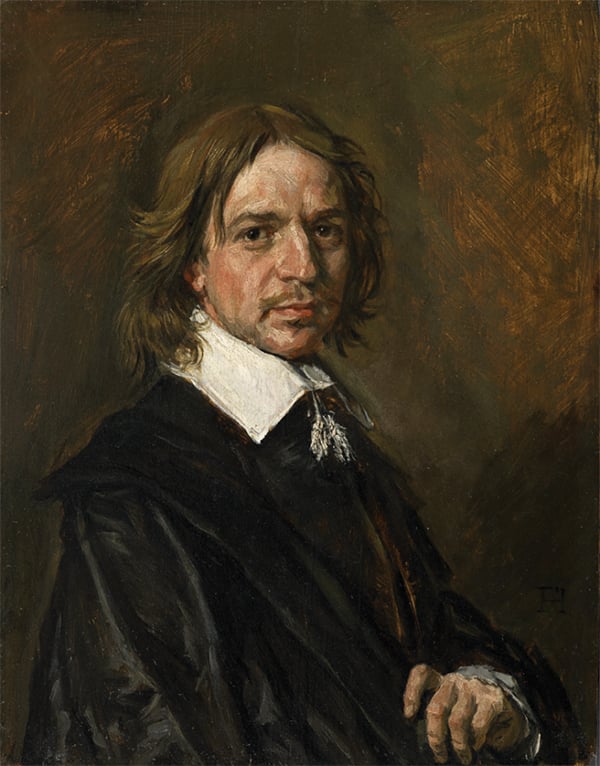Opinion
The Latest Forgery Scandal Is a Tempest in a… Fruit Bowl
THE DAILY PIC: On an admirable Frans Hals that has turned out to be fake – and why such revelations barely matter.

THE DAILY PIC: On an admirable Frans Hals that has turned out to be fake – and why such revelations barely matter.

Blake Gopnik

THE DAILY PIC (#1654): On yesterday’s Marketplace Morning Report, I did a radio spot about the latest forgery “scandal” revolving around the portrait that is today’s Pic. That portrait was widely admired as a little-known work by the 17th-century Dutchman Frans Hals until scientific examination proved that it must have been painted more recently, by a forger. (Sotheby’s was left refunding the $10-million or so that a client had paid for it in 2011.)
In the interview, you can hear me talking about how radically different art forgery is from, say, the forging of a check or a land deed. What was left on the cutting-room floor was my analysis of why connoisseurship, the “expert eye,” is inevitably doomed to fail when it comes to telling a true Hals (or Rembrandt, or van Gogh) from objects that look amazingly like the real thing—i.e., from the skilled forgeries that we know for sure are out there.
I compared the connoisseur to a fruit packer who needs to sort out a pile of plums and cherries, and so constructs a sieve that does a perfect job of letting through the small fruit and keeping out the big, and does so time and time again as it’s used. “Wow,” says the packer, “what a brilliant machine! If it does that great a job on plums and cherries, imagine what a great job it will do sorting cherries from strawberries.” And then of course our fruiterer discovers that the machine is utterly useless at that second task, no matter how many times he runs his fruit through it. In art, the cherries and plums are all the relatively different artists that are out there, whom connoisseurs can reliably tell apart even if they maybe come from the same school and place and time. This is where connoisseurship shines and can impress the layman. And then there are the tougher cases: Rembrandt on a bad day to be told from a pupil on a good one, or—which is much the same thing—Rembrandt from a skilled forger. This is where connoisseurship fails, and, like the coarse-grained sieve, is bound to do so in principle, because it simply and inevitably isn’t up to the task of making those finer distinctions. That’s proven by the constant disagreement that occurs even among our greatest “eyes”, and the fact that there’s simply no way for anyone to resolve their disputes—except scientifically.
Notice that it was science that proved the Hals to be fake, as it did with other works that seem to have come from the same forger and have been equally accepted by experts. And it may be that only science can be of real use in resolving disputes about authorship.
There’s one other take-home from all this that I hinted at on Marketplace: Any case where science does need to be invoked is a case where the forgery is so good, and so very like what we expect from the artist in question, that it does all the aesthetic work that an original would. In which case the fake can happily be folded in with the real works we know, without doing much harm at all or even making much of a difference.
Which makes me think that maybe connoisseurs can actually be of use to art lovers after all, even in the toughest cases: Any time expert eyes can’t agree on whether a picture is real or fake—or when it turns out that they all agree that a fake is real—they are actually letting us know that it’s a case that’s barely worth resolving. (© Sotheby’s, via FT.com)
For a full survey of past Daily Pics visit blakegopnik.com/archive.